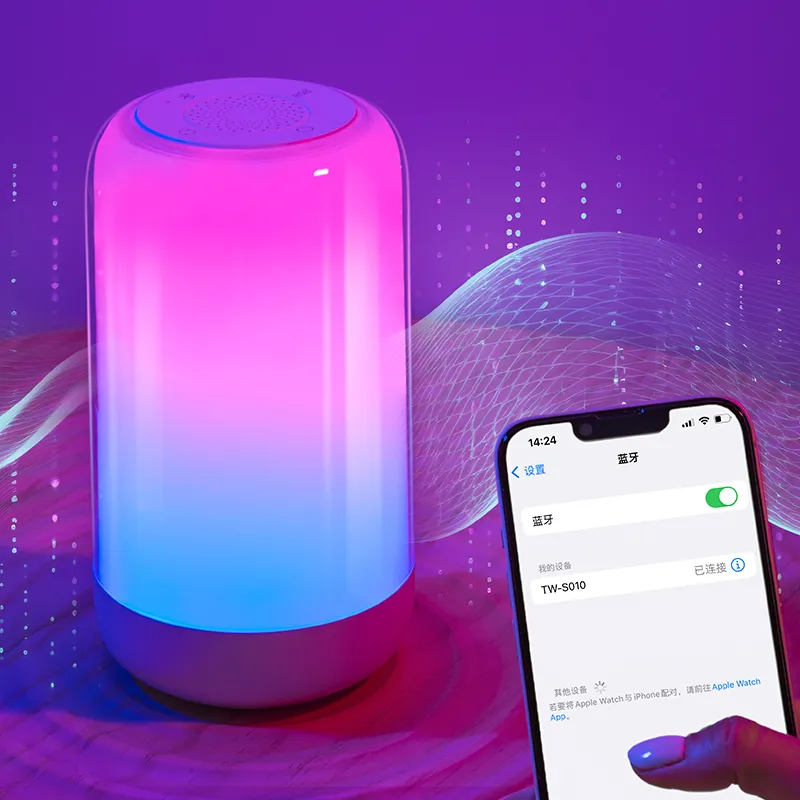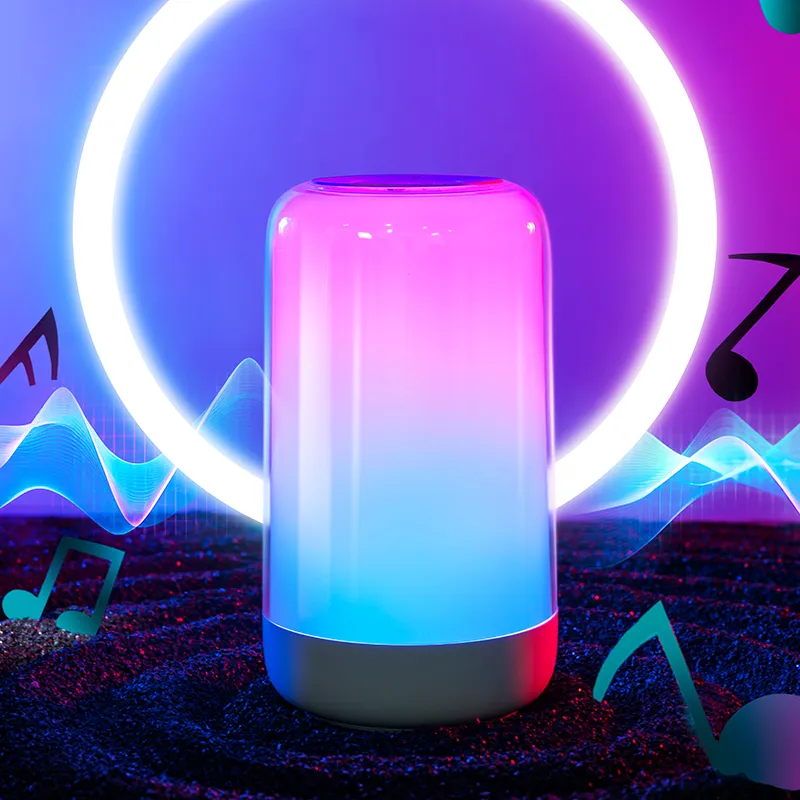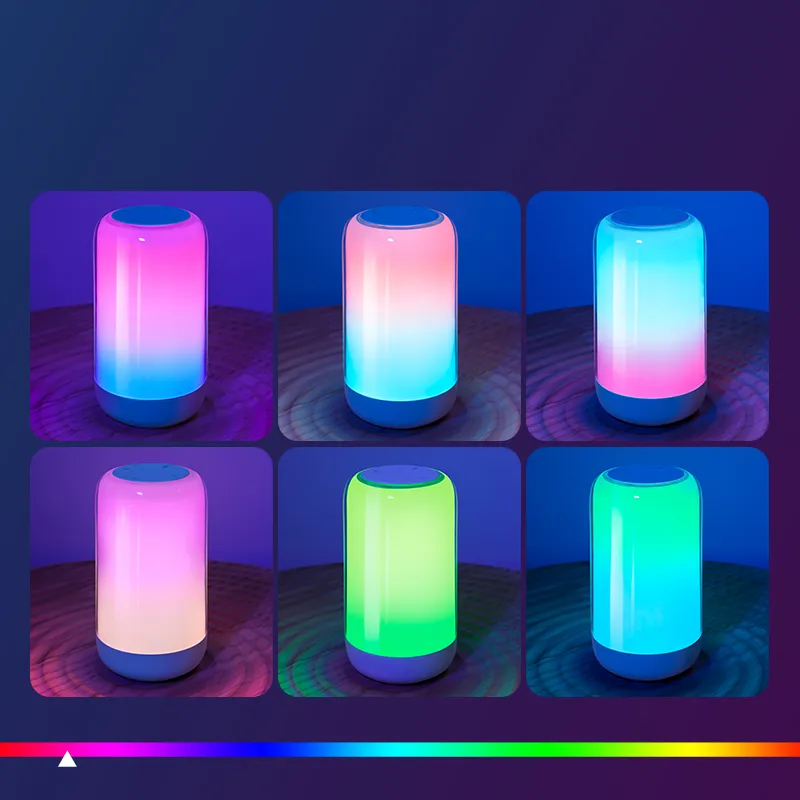What is a color-changing LED night light called?
LED night lights are no longer just single-function lighting tools. Products that can display multiple colors at night, in particular, are becoming a rising star in home lighting. Many parents, interior design enthusiasts, and tech enthusiasts often ask, "What is a color-changing LED night light called?"
This article will comprehensively analyze this question from the perspectives of definition and technical principles, focusing on "color-changing LED night lights" to provide readers with a professional and systematic answer.

What is a color-changing LED night light?
A color-changing LED night light is a nighttime lighting device that can switch between different light colors to create a colorful lighting effect. Compared to traditional single-color night lights, color-changing LED night lights are no longer limited to providing white or warm light. Instead, they can display a variety of colors, including red, blue, green, purple, yellow, cyan, and pink, depending on usage needs and the scene. Hundreds of different color combinations can be created, allowing them to provide more than just lighting; they can also create an atmosphere.
Color-changing LED night lights: What are they called?
In professional terms, these products are often referred to as "color-changing LED night lights" or "RGB LED night lights," where RGB stands for the three primary colors of red, green, and blue. By combining different red, green, and blue light sources, nearly any visible color can be generated, thus achieving color-changing functionality.
Thus, by definition, a color-changing LED night light is a night light product that utilizes LED technology to achieve color adjustment. It emphasizes multi-colored lighting effects and flexible adjustment, representing an upgrade from traditional night lights.

Color-Changing LED Night Lights: Why Are They Called RGB Night Lights? — Technical Principles
1. Basic Characteristics of LED Light Sources
LEDs (Light Emitting Diodes) are semiconductor devices that directly convert electrical energy into light energy. Compared to traditional incandescent and fluorescent lamps, LEDs offer advantages such as low energy consumption, high brightness, long life, and low heat generation, making them the preferred light source for night lights, especially color-changing night lights.
2. Principles of RGB Primary Colors
The core of color-changing LED night lights lies in the combination of the three primary colors: red, green, and blue. The three primary colors, when mixed in varying brightness ratios, can produce nearly all visible colors. For example:
• Red + Green = Yellow
• Green + Blue = Cyan
• Red + Blue = Magenta
• Red + Green + Blue = White
This principle enables color-changing LED night lights to achieve flexible color switching and gradient effects through control circuitry.
3. Control Circuit and Dimming Technology
Color-changing LED night lights typically have built-in control circuitry to adjust the brightness and on/off sequence of each LED chip. Common adjustment methods include:
• Manual button adjustment
• Remote control
• Smartphone or voice control
Through the control circuitry, users can choose from fixed colors, gradient modes, breathing light effects, or flashing modes, creating a diverse lighting experience.

Color-Changing LED Night Lights: Structural Features
Color-changing LED night lights typically consist of the following core components:
1. LED Chip
Red, green, and blue LED chips are the core light-emitting units, typically using a three-in-one chip or a combination of multiple single-color chips.
2. Lampshade and Housing
Lampshades are often made of translucent or frosted materials to soften the light and prevent direct sunlight from reaching the eyes. The housing is typically made of ABS plastic or silicone, ensuring safety and heat dissipation.
3. Control Circuit
This circuit adjusts the LED brightness and color ratio and is a key component in achieving the color-changing effect.
4. Power Supply and Interface
Color-changing LED night lights generally use a low-voltage power supply. Some models support USB power, rechargeable batteries, or direct plugging, ensuring safety and convenience.
Color-Changing LED Night Lights: Functions and Applications
1. Home Nighttime Illumination
At night, color-changing LED night lights provide low-brightness supplemental illumination, preventing bright light from disturbing sleep and facilitating nighttime activities such as feeding, changing diapers, or using the toilet.
2. Ambiance Creation
Color-changing LED night lights can create a variety of atmospheres through their colorful lighting effects. For example:
• Warm tones: Create a sense of warmth and comfort
• Blue tones: Create a sense of tranquility and calm
• Gradient or breathing patterns: Add interest and dynamism
3. Children's Room Use
Children are sensitive to light, and bright or monochromatic light can disrupt their sleep. Using a color-changing LED night light, you can choose between soft, warm light or subtle gradients to suit your needs, ensuring both safety and visual comfort.
4. Functional Lighting
Some color-changing LED night lights can be used for reading or short-term tasks, achieving multifunctional illumination through brightness adjustment and color combinations.
What are the advantages of color-changing LED night lights?
• Rich colors: By combining the three primary colors of red, green, and blue, a rich variety of colors can be produced, surpassing traditional monochromatic night lights.
• Low energy consumption and long life: LED technology is energy-efficient and can last up to tens of thousands of hours.
• Flexible operation: Supports multiple brightness levels, color switching, and mode selection.
• High safety: The low-voltage power supply design and low heat generation make them suitable for children and families at night.
• Psychological Comfort: Color adjustment can influence mood and psychological state, helping to relax or soothe children.
Precautions for Using a Color-Changing LED Night Light
• Brightness Control: When used at night, keep the brightness as low as possible to avoid glare or disrupting sleep.
• Color Temperature Selection: Choose warm colors for sleep and avoid high-temperature blue light to prevent interference with melatonin secretion.
• Avoid Direct Eye Exposure: Especially for children, color-changing LED night lights should be placed to the side of infants and young children's eyes or away from the headboard.
• Scheduled and Scenario-Based Use: Some products can be set to time off or automatically dim to minimize disruption to sleep.
• Safety and Material Selection: Choose a product with safety certification, a soft, smooth-cut shade material, and a low-voltage, safe circuit design.
Color-Changing LED Night Lights and a Healthy Light Environment
Scientific research shows that different colors of light have different effects on human circadian rhythms and mood:
• Red and orange light: Low melatonin suppression, suitable for nighttime use, and can help soothe children.
• Blue light and cool white light: They can easily make people wake up and are not suitable for prolonged nighttime use.
• Green light: It has a certain soothing effect, but the brightness should be lower than that of a nightlight.
Therefore, choosing the right color and brightness is a key principle for the scientific use of color-changing LED nightlights.

Frequently Asked Questions for Consumers
1. Are all color-changing LED nightlights called RGB nightlights?
Strictly speaking, only nightlights that achieve multi-color changes based on the RGB principle are called RGB nightlights. Most "colorful nightlights" on the market are RGB nightlights.
2. Are color-changing LED nightlights harmful to the eyes?
High-quality LED nightlights feature a low-blue light design and a diffuser, making them harmless to the eyes under normal use. However, inferior products may flicker, so be aware when purchasing.
3. What is the lifespan?
High-quality LED chips can last over 30,000 hours, far longer than ordinary incandescent bulbs.
4. Can they also be used as regular lighting?
Some high-brightness models can, but most color-changing LED night lights are positioned for auxiliary lighting and ambient lighting, and their brightness is not as bright as main lighting fixtures.
Conclusion: What is a color-changing LED night light called?
The above analysis leads to clear conclusions:
1. Color-changing LED night lights are often called "color-changing LED night lights" or "RGB LED night lights."
2. Their core technology uses a combination of red, green, and blue primary color LEDs and a control circuit to achieve a variety of lighting effects and adjustable brightness.
3. Compared to traditional single-color night lights, color-changing LED night lights offer multiple advantages, including rich colors, adjustable brightness, safety, energy saving, and psychological comfort.
Does Huari Lighting offer wholesale promotions?
Yes. As a professional LED company, we regularly provide promotions on bulk orders. Buyers who purchase large quantities of LED panel lamps, downlights, or night lights from Huari can enjoy lower prices and special sales offers. Since our monthly capacity exceeds 1,000,000 pieces, we can handle both small wholesale and large project supply.
Our China-based factory ensures fast production, high quality, and cost-effective delivery. We invite global partners to request wholesale quotes and benefit from seasonal discount campaigns.
